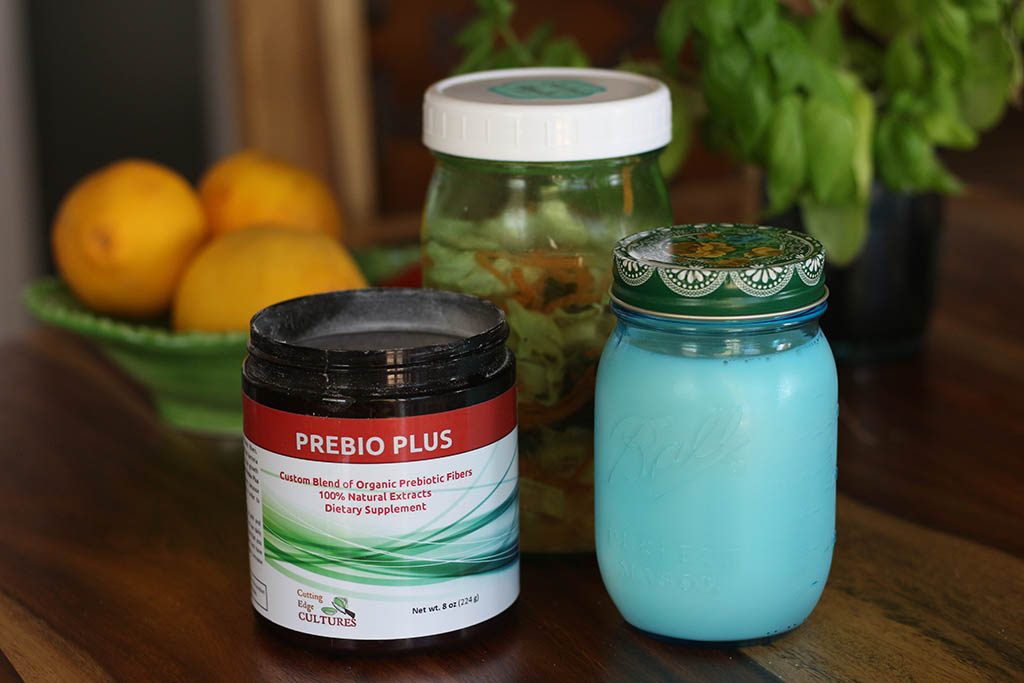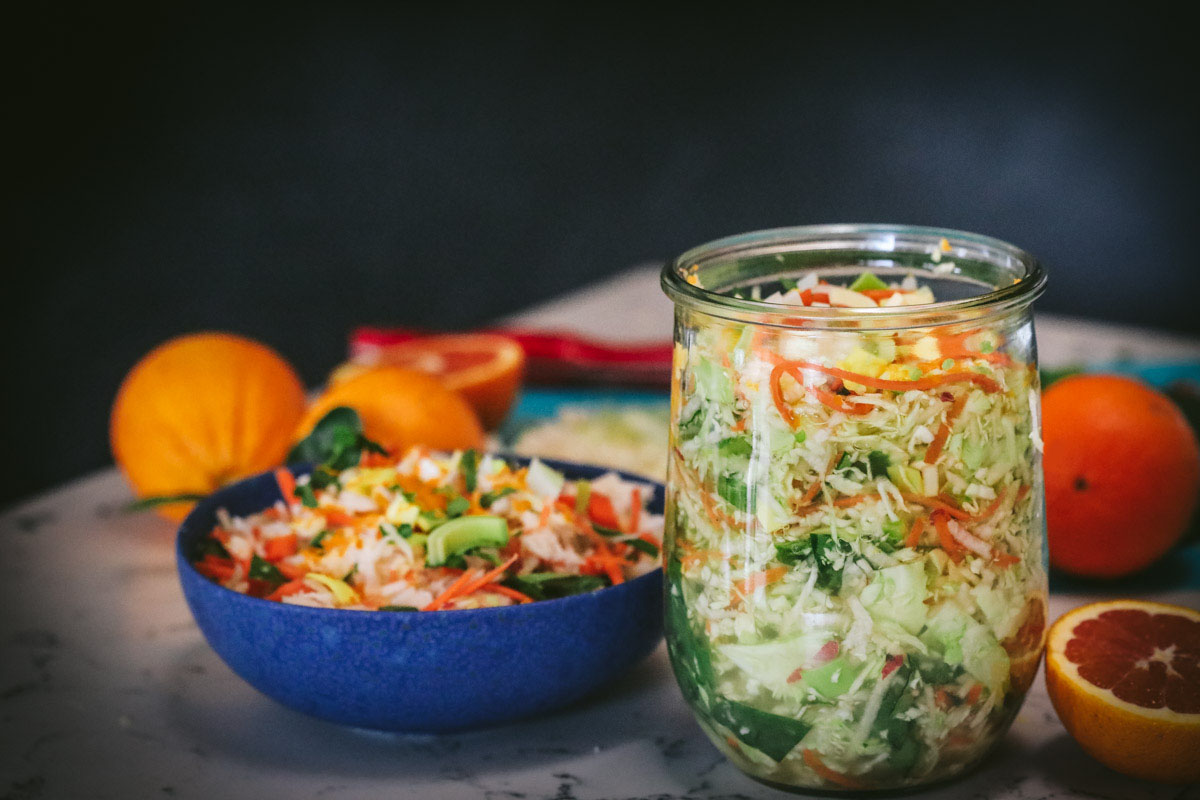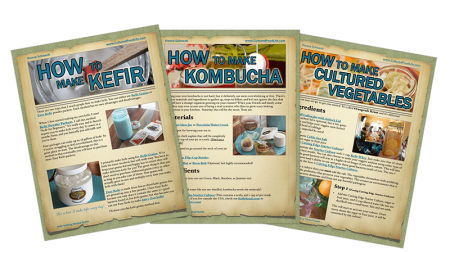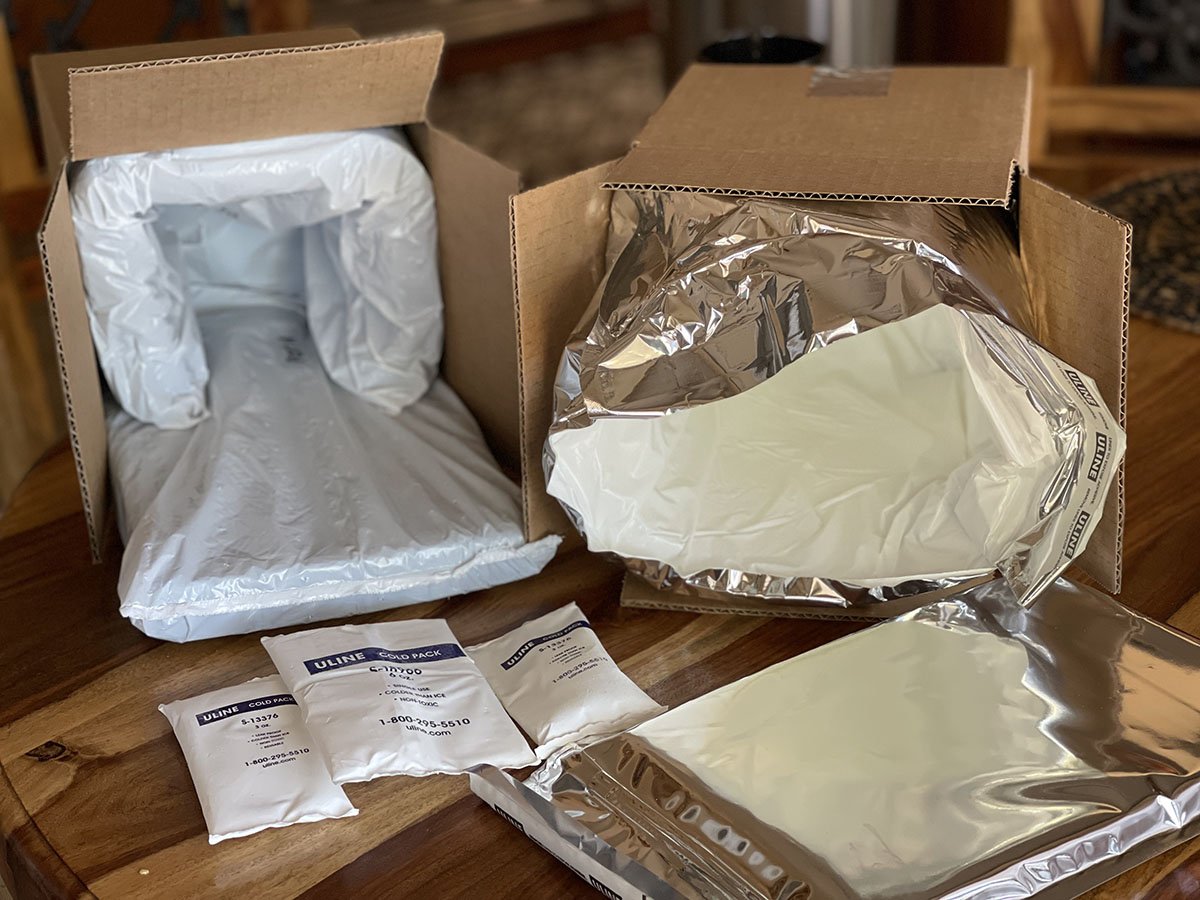
The Most Powerful Cultured Veggies
Jump to the recipe! 🫙🥬🍎
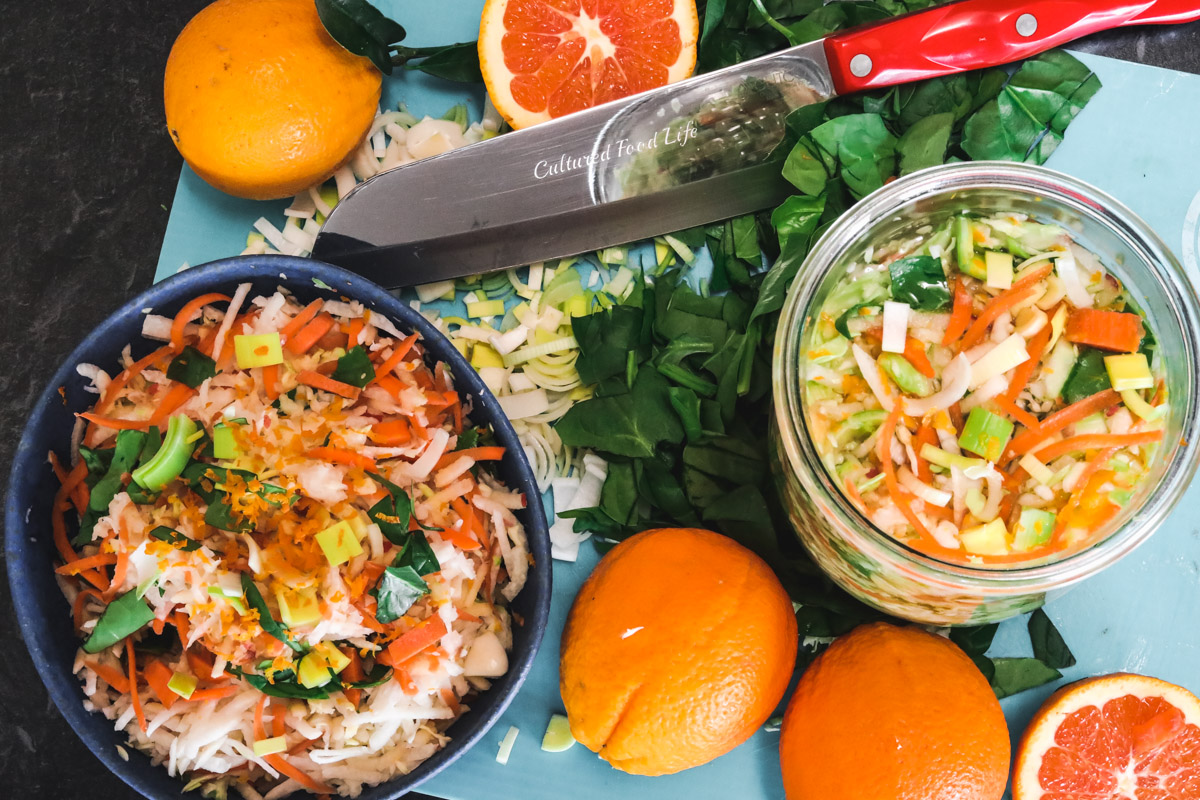
All the forces in the world are not so powerful as wisdom that has been discovered by someone who needs it.
Cultured Veggies
What Are Prebiotics?
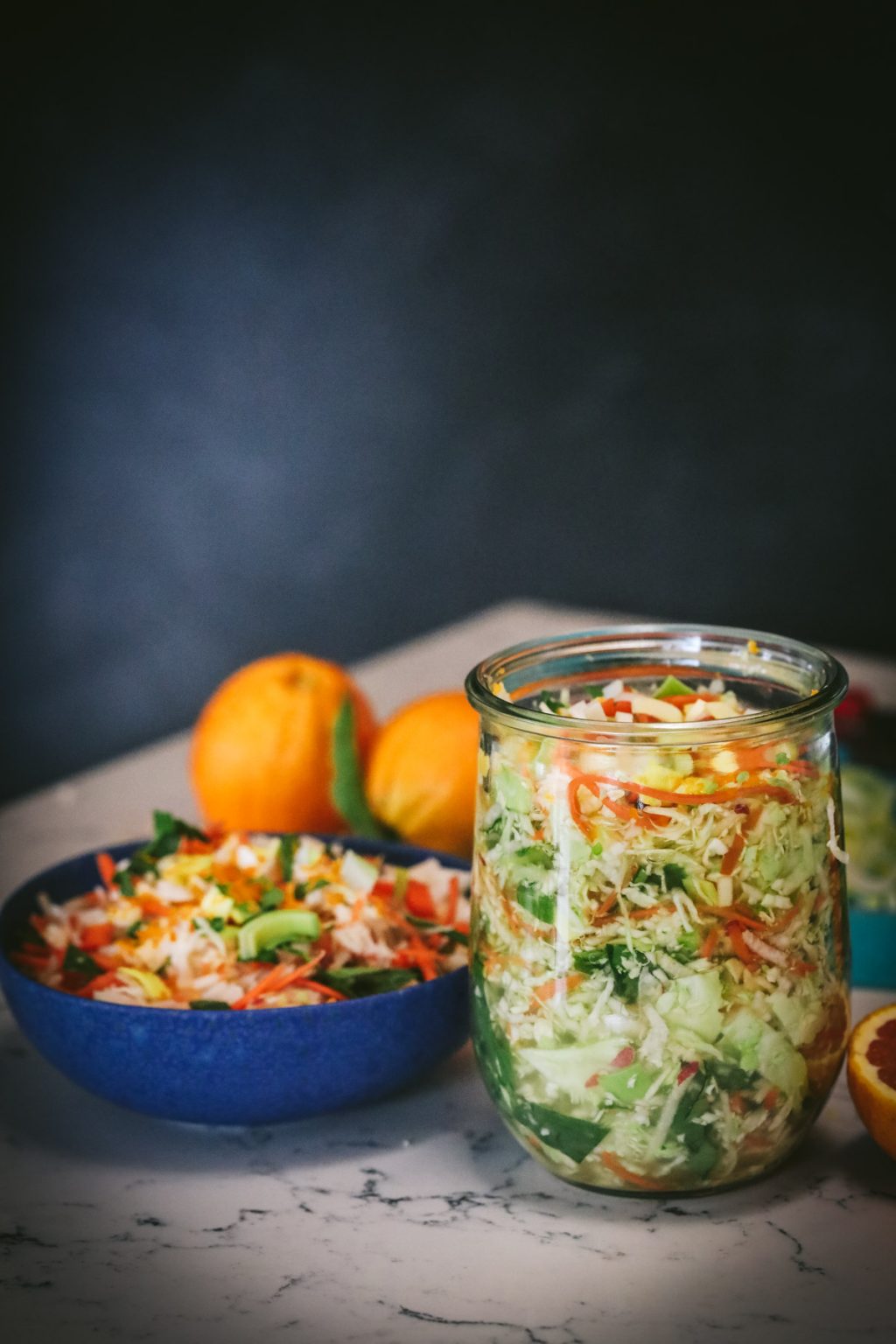
Prebiotics Act As A Fertilizer
These prebiotics act as a fertilizer to promote the growth of the good bacteria in our gut. This is essential to the health and function of our immune system. You want a diverse and healthy amount of good bacteria in your gut, and eating cultured foods accomplishes this. With the addition of prebiotics, you have a super-strong combination that boosts your immune system. Prebiotics also strengthen your ability to absorb calcium, magnesium, and other minerals usually lacking in our diets.
Different Prebiotics
Consuming prebiotics daily with cultured foods can change your gut bacteria in a day. Here are some of the prebiotics that help you grow a healthy gut: jicama, onions, garlic, chicory root, Jerusalem artichokes, leeks, dandelion greens, asparagus. celery, the stalks of broccoli (not the florets), the peels of oranges and lemons that are fermented, red wine, nuts, seeds, honey, and some whole grains. Check out this article for more info.
Different Types Of Food For Your Gut
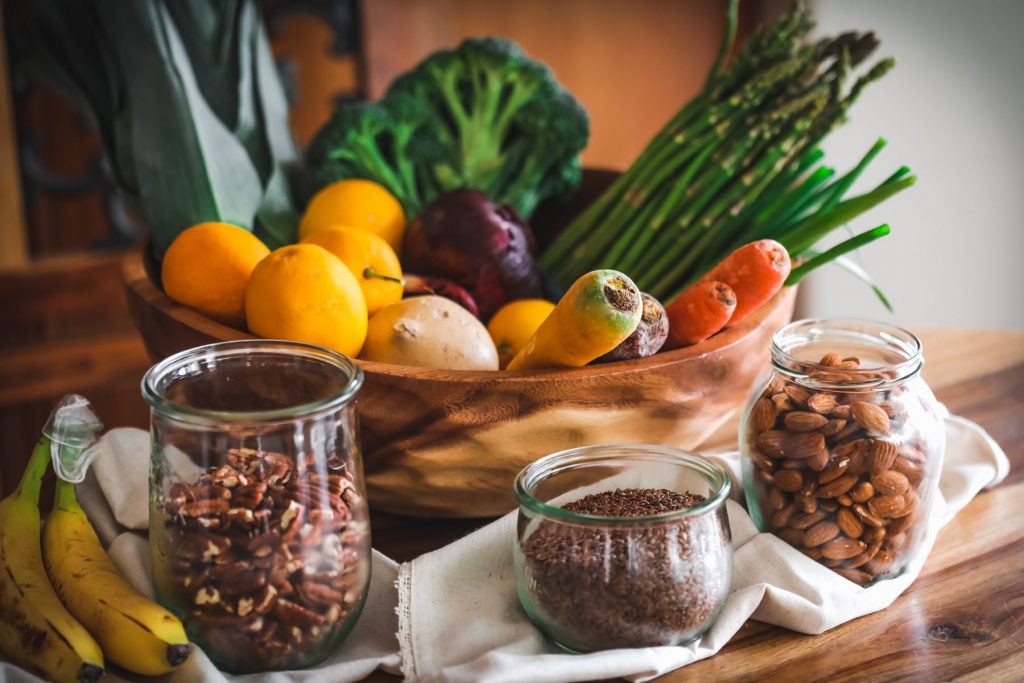
I am making all sorts of new recipes with tons of prebiotics and I sell a prebiotic too, in the product Prebio Plus. Prebio Plus has three of the most powerful prebiotics you can ingest. Each scoop contains, Organic Inulin, Organic Acacia, and Fructooligosaccharides (FOS).
The Strongest Prebiotics
Inulin and FOS in Prebio Plus are both a type of soluble fiber found in many plants, although many of these plants contain only small amounts of inulin. Here’s how much inulin is in 3.5 oz, or 100 grams, of the following foods:
- Asparagus: 2-3 grams.
- Chicory root: 36-48 grams.
- Garlic: 9-16 grams.
- Jerusalem artichoke: 16-20 grams.
- Jicama: 10-13 grams.
- Leeks: 1-8 grams.
These prebiotics are made up of chains of fructose molecules that are linked together in a way that cannot be digested by your small intestine; and for this reason, those with SIBO should fix their guts before ingesting Inulin or FOS.
The prebiotic acacia, often called acacia gum, contains 86% prebiotic content. It is used as a food stabilizer and has a substantial amount of fiber and is essential for strengthening the population of good bacteria in your gut.
Your gut bacteria convert inulin, acacia, and FOS into short-chain fatty acids. This can bring about a number of health benefits. It will nourish colon cells and can help with weight loss and lowering blood sugar. When the soluble fibers that comprise inulin create a gelatinous substance, the gel spreads out and creates a feeling of fullness
Prebiotics as important as Probiotics
 Weight Loss and Prediabetes
Weight Loss and Prediabetes
When overweight adults took 21 grams of inulin per day, their hunger hormone levels decreased and their fullness hormone levels increased.[1]
In another study, forty-four prediabetic individuals consumed either 18 weeks of inulin [2]or cellulose (another type of fiber) supplementation. Each one had four visits to a dietitian to obtain a 5% weight loss, which they all achieved by week 9. Those taking inulin lost significantly more weight between 9 and 18 weeks and scored better on liver tests, blood sugar, and lipid profile independent of weight loss. There are many more studies that indicate that inulin can also help with weight loss and increasing your consumption of these special fibers helps to keep you healthy in so many ways. [3][4][5]
You can add Prebio Plus to your kefir or veggies and it will make a world of difference. You will notice it after the first dose. Your stomach might start to gurgle and that's the bacteria having a feast. You can put this prebiotic in hot or cold foods, so I add a little bit to my tea every morning and I also feed it to my kefir grains, and oh my, they love it. They will grow like crazy and it will also help you make your kefir creamy again after it has separated. Add a small amount of Prebio Plus, shake up the jar, put it in the refrigerator, and the next day your kefir is creamy again. Bacteria need food, too, and when you give them what they need, you will feel it in many ways. You'll feel better, lighter, elimination will be easier and more frequent, and flu and colds will be a thing of the past.
Prebiotics are every bit as powerful as probiotics. It's exciting stuff. I'm still growing and learning, and I love that I was already making recipes with prebiotics without realizing it.
🥬🥕🍊🍎 Eat your cultured foods, fruits, veggies, nuts, and seeds and add prebiotics, too, and your gut bacteria can change overnight. This recipe has everything you need to accomplish the task. I just made a new jar myself! I really do love bacteria - somebody has to! They've taught me so many things and continue to do so. They've become my master teachers.
"I am still learning"Michelangelo, age 84
Flu Prevention: Cultured Veggies
Watch The Video
Equipment
Ingredients
- ¼ teaspoon Veggie Starter Culture - or ¼ cup Kefir Whey
- ½ small cabbage - 6+ cups
- 1 cup jicama
- 1 cup apple
- 1 cup spinach - or kale
- 1 small leek - chopped
- 1 medium carrot - shredded
- 1 clove garlic - minced
- ½ tablespoon Celtic Sea Salt
- 1 large orange - zested and juiced
- 1 scoop Prebio Plus - optional
Every ingredient with a link was selected by me to make it easier for you. I may receive a small affiliate commission if you buy something through my links. Thank you! ❤️
Instructions
- If using the starter culture, stir the culture into 1/4 cup of water. Let the mixture sit while you prepare the ingredients—around 10 minutes. If using kefir whey, add it when the recipe calls for culture.
- Finely shred the cabbage, jicama, apple, spinach, leek, and carrot using a food processor or a hand shredder. Add to a large bowl.
- Add the garlic, Prebio Plus, and salt to the bowl and toss to combine. Pack all ingredients into jars.
- Add the orange zest and juice, Cutting Edge Culture or kefir whey, and cover with water leaving an inch or two at the top.
- Seal the container and let it sit on your kitchen counter, out of direct sunlight, for 6 days. After 6 days, place the container in the refrigerator.
- Check the vegetables every day to make sure they are fully submerged in the water. If they have risen above the water, simply push them down so they are fully covered by the water. If any white spots formed because the veggies rose above the water, do not worry. Remember, this isn’t harmful. Just scoop out the vegetables that have the white spots on them and push the rest back under the water.
Notes
Listen To My Podcast
Our guts comprise at least 70% of our immune system and if your gut is healthy, guess what? Your immune system is too! Probiotic cultured foods are an important key but so is something else. Prebiotics are my new frontier of discovery, and all the things I am learning are blowing my mind. Check out the podcast to learn more about how to make the most powerful cultured vegetable recipe.
Are you on the list?
Sign up today and I'll send you my free Getting Started Guide!
Each week I'll send you updates, tips, recipes, and more! You might even be a winner of my weekly giveaway! (starter cultures, memberships, and more!)
Come be a part of my cultured food family!

